In the world of mountain climbing, peaks with a height of more than 8,000 meters above sea level have a special distinction. They are the highest mountains in the world, and they’re recognized by the International Mountaineering and Climbing Federation (UIAA) as “eight-thousanders.”
There are 14 eight-thousanders, and they include the tallest mountain in the world. All the mountains in this category are found in Asia, in the countries of Pakistan, India, Nepal, China, or a combination of these. In this post, we’ll examine each of these giant mountains to find out which is the tallest, who climbed them first, and which is the most dangerous.
| Mountain | Height Above Sea Level |
| Mount Everest | 8,848 m (29,029 ft) |
| K2 (Mount Godwin Austen) | 8,610 m (28,251 ft) |
| Kangchenjunga (Kantian) | 8,586 m (28,169 ft) |
| Lhotse | 8,516 m (27,940 ft) |
| Makalu I | 8,463 m (27,838 ft) |
| Cho Oyu | 8,201 m (26,864 ft) |
| Dhaulagiri | 8,167 m (26,795 ft) |
| Manaslu | 8,163 m (26,781 ft) |
| Nanga Parbat (Diamir) | 8,126 m (26,660 ft) |
| Annapurna I | 8,091 m (26,545 ft) |
| Gasherbrum | 8,068 m (26,470 ft) |
| Broad Peak | 8,047 m (26,401 ft) |
| Gasherbrum II | 8,035 m (26,362 ft) |
| Gosainthan (Shishampangma) | 8,012 m (26,286 ft) |
14. Gosainthan (Shishapangma)
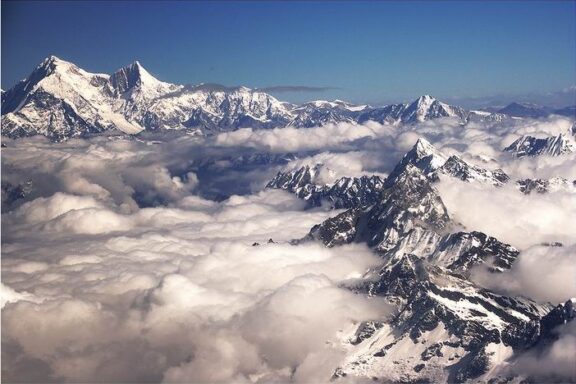
Elevation: 8,012 m (26,286 ft)
Country: China
Gosainthan is the 14th-tallest mountain in the world, standing 8,027 meters above sea level in the Tibet region of China. The mountain is located only five kilometers from the border with Nepal, and its location within China-administrated Tibet has made access to foreign climbers difficult.
Its location in a restricted area is one of the reasons it was the last of the world’s mountains above 8,000 meters to be climbed. It is the only mountain on this list located entirely within China.
The first ascent of Gosainthan took place in 1964 by a Chinese team of ten led by Xu Jing. This was one year before the area became the Tibet Autonomous Region.
13. Gasherbrum II
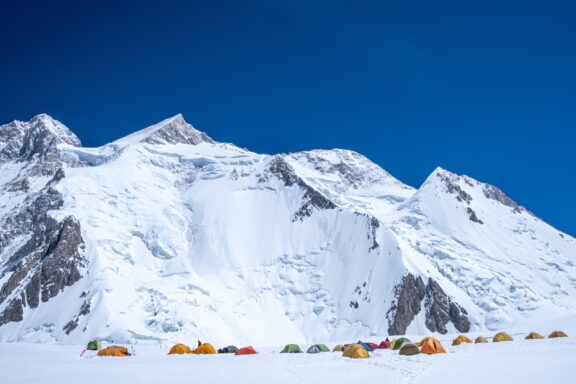
Elevation: 8,035 m (26,362 ft)
Country: Pakistan, China
Located on the border between Pakistan and China, Gasherbrum II is the 13th-tallest mountain in the world. It’s located in the Karakoram mountain range of the Himalayas. It was historically referred to as “K4” for being the fourth mountain in the Karakoram range. The name Gasherbrum comes from Balti, a native language of the Balti people of Tibet, which means “beautiful mountain.”
The first ascent of Gasherbrum II happened in the summer of 1956 when a team of three Austrians led by Fritz Moravec reached the summit. There have been 54 successful, documented summit attempts of Gasherbrum II up until 2004. Of the Karakoram 8,000 m peaks, Gasherbrum II is considered the safest to climb.
12. Broad Peak
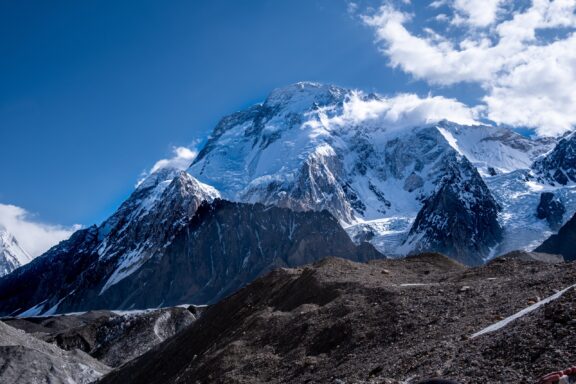
Elevation: 8,047 m (26,401 ft)
Country: China, Pakistan
The next highest mountain above 8,000 m on this list is Broad Peak, which is also located in Karakoram at the border between Pakistan and China. The name of this mountain alludes to the fact that its peak is 1.5 kilometers long and was introduced in 1892 by a British explorer. There are five summits on the mountain, of which Broad Peak is the tallest.
The first ascent of Broad Peak was successfully conducted by an Austrian expedition in 1957, and 39 ascents were successful between then and 2004. Shehroze Kashif from Pakistan was the youngest person to have summited Broad Peak when he did so at the age of 17 in 2019.
11. Gasherbrum (K5)
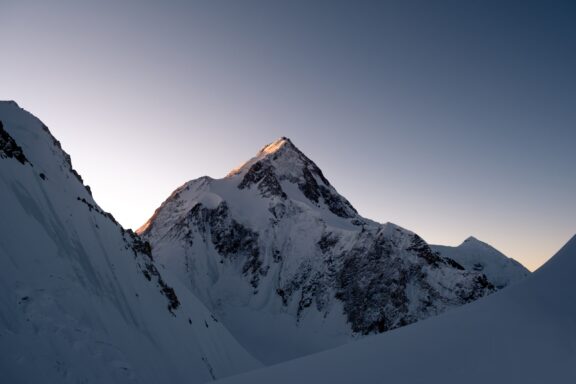
Elevation: 8,068 m (26,470 ft)
Country: Pakistan, China
Gasherbrum I is the 11th highest mountain in the world, standing 8,080 m tall on the border between Pakistan and China. It also goes by the name of Hidden Peak and was designated “K5” by T.G. Montgomerie’s survey of 1856. Gasherbrum is extremely remote, which is why William Martin Conway lent it the name Hidden Peak.
The first ascent of this mountain took place by an American team led by Nicholas Clinch in 1958. Swiss skier Silvain Saudan managed the first ski descent from the summit of an 8,000-meter mountain to base camp on Gasherbrum in 1982. Gasherbrum is a technical, challenging climb, and only the most experienced climbers attempt to summit. There have been around 200 recorded ascents to date.
10. Annapurna I
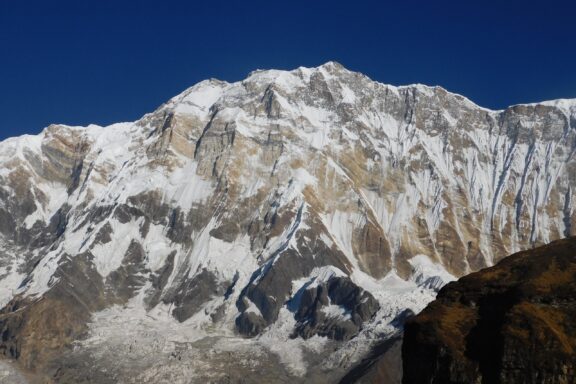
Elevation: 8,091 m (26,545 ft)
Country: Nepal
Annapurna is one of the most famous mountains in the world, and it was the first over 8,000 m to be ascended in 1950 by an expedition led by French mountaineer Maurice Herzog. The name of the mountain is the same as the Hindu goddess of food and nourishment, and it loosely translates to “everlasting food.”
Along with its fame for being the first 8,000m mountain to be climbed, Annapurna is notorious for its difficulty and the danger involved in a summit attempt. It currently has the second-highest fatality rate after K2. As of 2022, 365 climbers have reached the summit, and 72 have died in the attempt.
9. Nanga Parbat (Diamir)
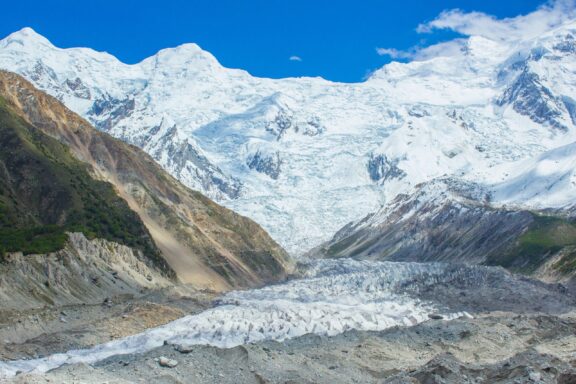
Elevation: 8,126 m (26,660 ft)
Country: Pakistan
Nanga Parbat is the westernmost major peak in the Himalayas. It is located in Pakistan-administered Kashmir just southeast of the Indus River. The name of Nanga Parbat comes from Sanskrit words meaning “naked mountain.” Nanga Parbat has also earned the nickname “Killer Mountain” for its reputation as a difficult and dangerous mountain to climb. Nanga Parbat has the second-most prominent peak in the Himalayas, second only to Mount Everest.
The first ascent of Nanga Parbat was carried out by Austrian Hermann Buhl, who ended up reaching the summit alone, making Buhl the only climber to make the first ascent of an 8,000 m peak alone. Nanga Parbat is located in the Himalayas in Nepal.
8. Manaslu
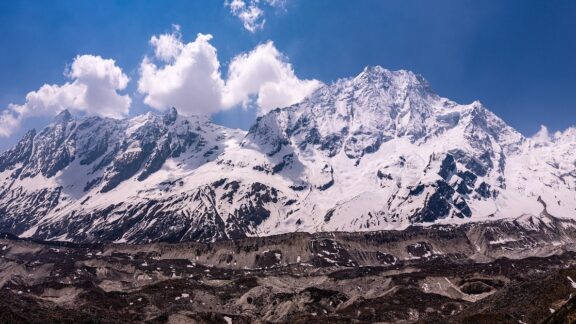
Elevation: 8,163 m (26,781 ft)
Country: Nepal
The Manaslu mountain sits in the northern Himalayas in the Gorkha District of Nepal and is the eighth tallest in the world. The mountain’s name means “mountain of the spirit” in Sanskrit, and the first ascent was completed by a Japanese team of mountaineers in 1956. In addition to its reputation as a spot for mountain climbing, Manaslu is popular among trekkers in Nepal.
To date, Manaslu has been ascended 297 times with 53 fatalities. The mountain has a false summit that is separated from the true summit by a dangerous ridge, and it is thought that many climbers only reach this first summit. The safest time to climb the mountain is in the spring, pre-monsoon season when avalanche risks are lower than at other times in the year.
7. Dhaulagiri
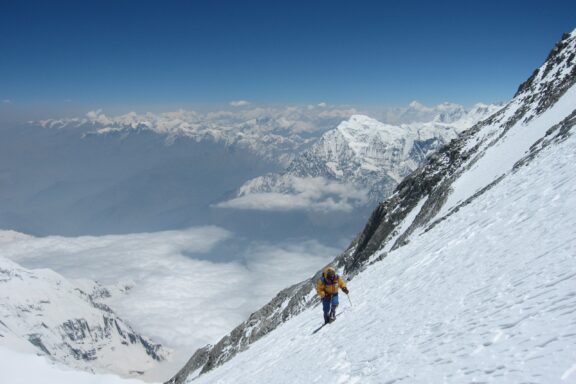
Elevation: 8,167 m (26,795 ft)
Country: Nepal
Located only 34 kilometers west of Annapurna I, Dhaulagiri is the seventh-highest mountain in the world and the tallest to exist entirely within the borders of a single country. A Swiss-Austrian-Nepali expedition was the first to successfully reach the summit of Dhaulagiri in 1960. The name of the mountain is the Nepali version of the Sanskrit name which means approximately “dazzling, white mountain.”
Dhaulagiri is a difficult mountain to climb, although there are several different routes to reach the top. Expeditions to the summit of Dhaulagiri last up to seven weeks, and the south face of the mountain remains unclimbed.
6. Cho Oyu
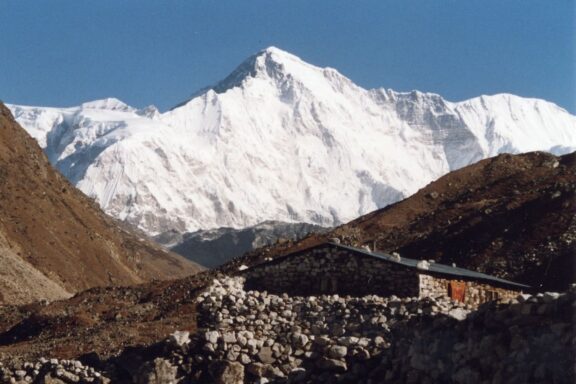
Elevation: 8,188 m (26,864 ft)
Country: China, Nepal
Cho Oyu is number six on this list of the highest mountains in the world, and it’s located just 20 kilometers west of Mount Everest, the tallest mountain in the world. Located in both China and Nepal, Cho Oyu can be found along the border between Chinese Tibet and Nepal. The mountain’s name means “Turquoise Goddess” in Tibetan.
Cho Oyu has the distinction of being considered the easiest of the 8,000 m peaks to climb. The relative ease with which it can be ascended has made it the second-most climbed 8,000 m mountain after Everest, which is the most popular for its height. The first ascent of Cho Oyu was made in 1854 by Austrians Joseph Jöchler and Herbert Tichy, along with Pasang Dawa Lama from Nepal.
5. Makalu I
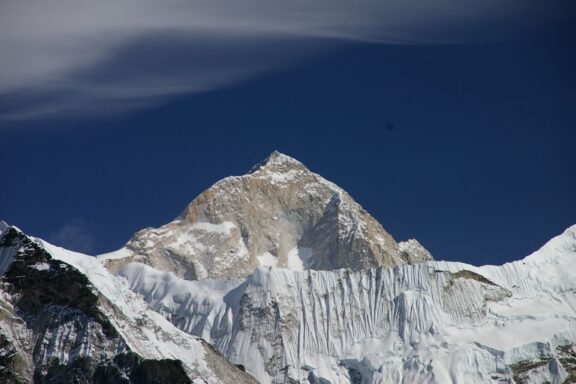
Elevation: 8,485 m (27,838 ft)
Country: Nepal, China
Makalu is the fifth-highest mountain in the world. It is situated in the Mahalangur Himalayas and can be found 19 kilometers from Everest, straddling territory in both Nepal and China. The mountain’s peak is an isolated pyramid with four sides.
The first summit attempt of Makalu was made in 1954 by American Riley Keegan and his team, but they were forced to turn back at 7,100 meters (23,300 feet) on the southeast ridge due to unfavorable weather. One year later, in 1955, Lionel Terray and Jean Couzy were the first to summit the mountain as part of a French expedition led by jean Franco.
Makalu is known to be one of the most difficult mountains to climb in the world. This is because of its notoriously steep inclines and narrow ridgelines.
4. Lhotse
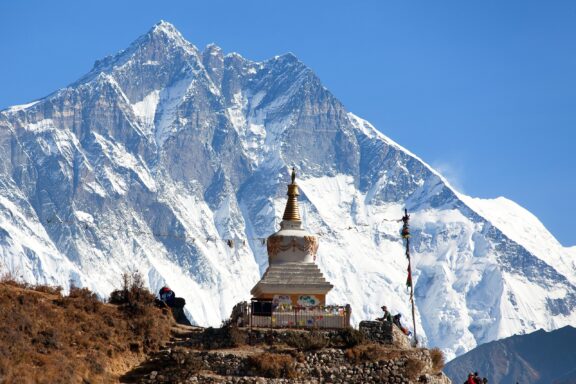
Elevation: 8,516 m (27,940 ft)
Country: China, Nepal
Lhotse is located on the border between China’s Tibet Autonomous Region and Nepal’s Khumbu region. It is classified as the fourth-tallest mountain in the world with an elevation of 8,516 meters above sea level. This is the least prominent peak among the eight-thousanders. The main summit of Lhotse was ascended in 1956 by a pair of Swiss mountaineers, Ernst Reiss and Fritz Luchsinger.
The northeastern face of Lhotse remains unclimbed, and ascents to the mountain’s secondary summits or via its steep South Face are considered some of the most challenging and dangerous climbs in the world. Much of the climbing path up Lhotse is shared with Mount Everest.
3. Kangchenjunga (Kantian)
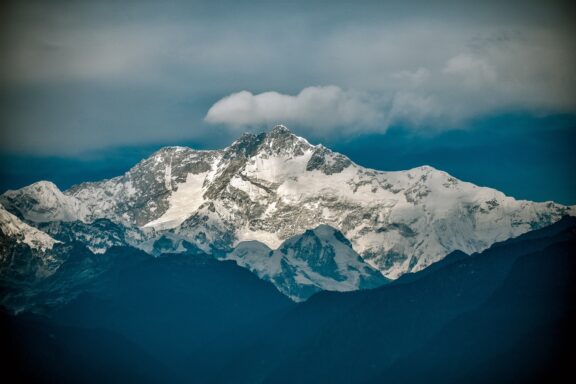
Elevation: 8,586 m (28,169 ft)
Country: Nepal, India
Kangchenjunga is the third-tallest mountain in the world. It was assumed to be the tallest mountain in the world until 1852 when data from the Great Trigonometrical Survey of India revealed that Mount Everest is the highest and K2 is the second-highest in the world. Kangchenjunga is located between Nepal and the Sikkim region of India.
The name Kangchenjunga comes from the Tibetan language and means something similar to “The five treasures of the snow.” Because Kangchenjunga is a sacred mountain to the people of Sikkim, the first climbers, Joe Brown and George Band, agreed to stop their ascent just short of the summit out of respect.
Khangchendzonga National Park in India is a UNESCO World Heritage Site, and climbing the mountain from India is prohibited.
2. K2 (Mount Godwin Austen)
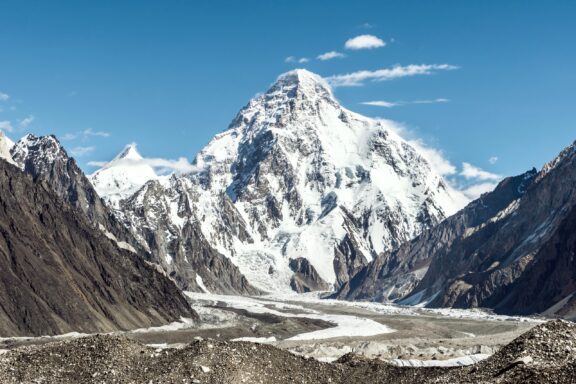
Elevation: 8,611 m (28,251 ft)
Country: Pakistan, China
Located in the Karakoram range and covering area in both the Pakistan-administered and China-administered regions of Kashmir, K2 is the second-tallest mountain peak on Earth. In addition to being famous for its incredible height, K2 is also known as the deadliest of the 8,000m peaks. It may not be as tall as Everest, but it is more difficult and dangerous to climb. 377 people have climbed to the summit of K2, and 91 have died in the attempt.
After several failed attempts to summit K2, the first successful attempt took place in 1954 by an expedition led by Ardito Desio. The second successful attempt didn’t happen until 23 years later in 1977.
1. Mount Everest
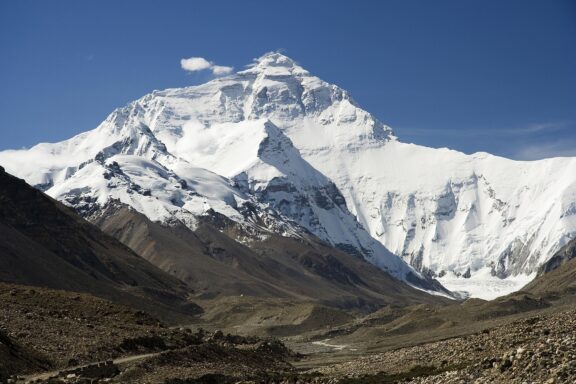
Elevation: 8,848 m (29,029 ft)
Country: Nepal, China
Mount Everest is the tallest mountain in the world, its peak reaching a height of 8,848 m (29,029 ft). It is situated in the Mahalangur Himal sub-range of the Himalayas along the border between Nepal and China.
Due to its status as the highest peak in the world, many mountaineers attempt to climb Everest. Hundreds of permits are issued by Nepal each year for climbers, and 2021 saw a record 408 permits issued. More than 890 climbers summited Mount Everest in 2019.
The first climbers to ascend Mount Everest were Edmund Hillary of New Zealand and Tenzing Norgay of Nepal. They were the second pair of climbers chosen by British expedition leader John Hunt and arrived at the summit on May 29 in 1953.